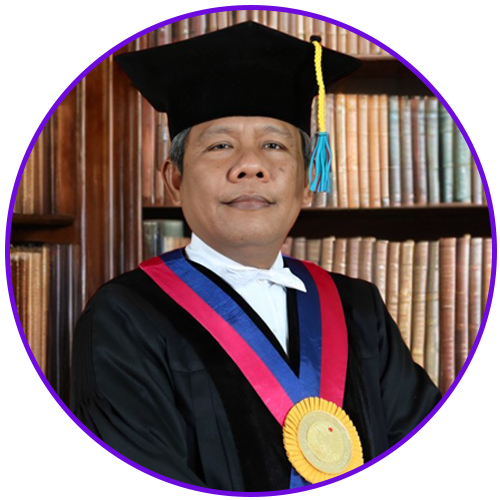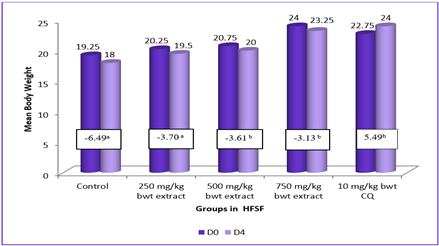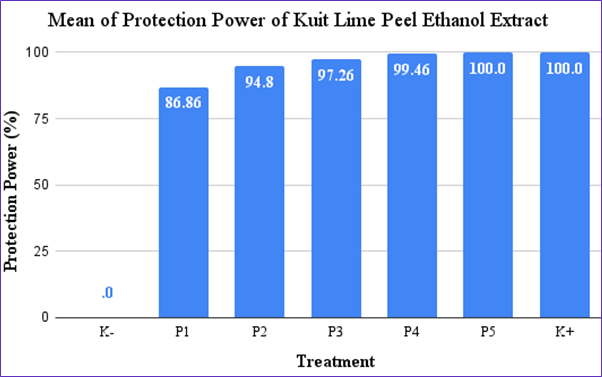Anthelmintic Activity of Basil Leaves (Ocimum sanctum Linn.) Infusion Against Ascaris suum In Vitro
Downloads
Ascaris suum is a parasite nematode that causes infection in swines with high prevalence rates in host populations and usually associated with liver damages called "milk spots” caused by larvae migration, resulting in organ condemnation. Basil leaves (Ocimum sanctum) phytochemical constituents contains flavonoid, phenol and tannin. Tannins and phenolics are known to interfere with the energy generation in helminth parasites by uncoupling oxidative phosphorylation and also bind to free proteins in the gastrointestinal tract of host animal or glycoprotein on the cuticle of the parasite and leading to death. This study was aimed to determine the activity of basil leaves (Ocimum sanctum) infusion in several concentrations against A. suum in vitro. This research used six treatments and four replications. This research used 10 A. suum in each treatment with four replication. The observations were done at 12, 18, 24, 30 and 36 hours in an incubator at 37oC. Based on the data analysis, basil leaves (Ocimum sanctum) infusion has anthelmintic activity against A. suum in vitro. The greater of the concentration and the longer of time of immersion, will make the death percentage of A. suum become higher. Concentration of basil leaves (Ocimum sanctum) infusion 15% is the effective concentration that can kill 100% of the A.suum during 36 hours of immersion.
Andrew, R.W., C. Fryganas, A. Ramsay, Irene Mueller-Harvey, and M. T. Stig. 2014. Direct Anthelmintic Effects of Condensed Tannins from Diverse Plant Sources against Ascaris suum. PLoS One. 9(5).
Athanasiadou., Kyriazakis I., and Jackson F. 2001. Direct Anthelmintic Effect of Condensed Tannins towards Different Gastrointestinal Nematodes of Sheep: in vitro and in vivo studies. Vet. Parasitol. 99(3):219-205.
Bhatt,K.J. 2014. Ocimum sanctum: The Indian Medicinal plant. Int. J. ChemTech.App. 3(1):53-57.
Chandrasekaran, C.V., H.S. Srikanth, M.S.Anand,J.J. Allan,M.M. Viji and A. Amit. 2013. Evaluation of the Mutagenic Potential and Acute Oral Toxicity of Standardized Extract of Ocimum sanctum (OciBest(TM)). Human and Exp. Toxicol. 32: 992-1004.
Hussain, A. 2008. Evaluation of Anthelmintic Activity of some ethonobotanicals Faculty of Veterinary Science. University of Agriculture Faisalabad Pakistan.
Jia, T-W, S.Melville,J. Utzinger, C.H. King, and Zhou X-N. 2012 Soil-Transmitted Helminth Reinfection after DrugTreatment:A Systematic Rev. and Meta-Analysis. PLoS Negl. Trop Dis. 6: 1621.
Joshi, K.C., D. Nanda,P. Nainwal and P. Saini. 2013. In Vitro Anthelmintic Activity of Ocimum sanctum. Int. J.Pharm. Sci. 3(4): 287-288.
Karumari, R.J., K. Vajayalakshmi and S.E. Balasubrahmanian. 2014. Preliminary Phytochemical Analysis and Anthelmintic Activity of The Aqueous Extract of Ocimum sanctum (Linnaeus, 1767) Leaves (Green and Black) Against Cotylophoron cotylophorum (Fischoeder, 1901). Int. J.Pharm. Biol. Sci. 5(2): 580 – 587.
Pandey, G. and S. Madhuri. 2010. Pharmacologocal Activities of Ocimum sanctum (Tulsi): A Review. Int. J.Pharm. Sci. Rev. Res. 5(1):61-66.
Roepstorff, A. 2003. Ascaris suum in Pigs: Population Biology and Epidemiology. Danish Centre for Experimental Parasitology. The Royal Veterinary and Agricultural University. Copenhagen,113.
Sentana, O.M. 2010. Efek Antihelmintik Ekstrak Etanol Daun Kemangi (Ocimum sanctum L.) terhadap Kematian Ascaris suum Goeze sp Secara in vitro[Skripsi].Fakultas Kedokteran. Universitas Sebelas Maret. Surakarta.
Stewart, T.B., and O.M. Hale. 1988. Losses to Internal Parasites in Swine Production. J. Anim. Sci. 66: 1548-1554.
Subekti, S. Koesdarto, S. Mumpuni, dan Kusnoto. 2012. Buku Teks Helmintiasis Veteriner. Surabaya: Pusat Penerbitan dan Percetakan Universitas Airlangga. 69-72.
Copyright (c) 2019 Journal of Parasite Science

This work is licensed under a Creative Commons Attribution-NonCommercial-ShareAlike 4.0 International License.
- Every manuscript submitted to must observe the policy and terms set by the Journal of Parasite Science
- Publication rights to manuscript content published by the Journal of Parasite Science is owned by the Journal of Parasite Science with the consent and approval of the author(s) concerned
- Authors and other parties are bound to the Creative Commons Attribution-NonCommercial-ShareAlike 4.0 International License for the published articles, legal formal aspect of journal publication accessibility refers to Creative Commons Attribution-NonCommercial-ShareAlike 4.0 International License (CC BY-NC-SA)
- By submitting the manuscript, the author agrees to the requirement that the copyright of the submitted article will be transferred to Journal of Parasite Science as the publisher of the journal. The intended copyright includes the right to publish articles in various forms (including reprints). journal of parasite science retains the publishing rights to published articles.

































